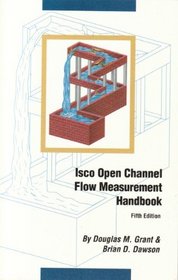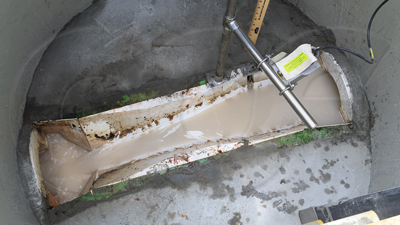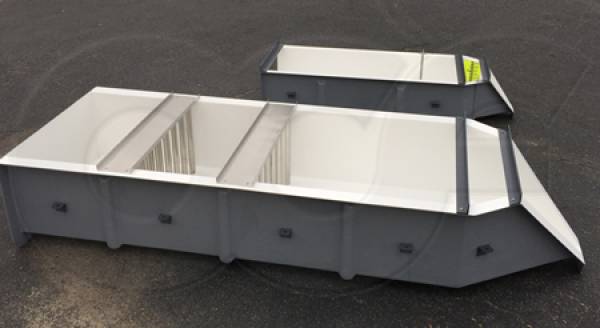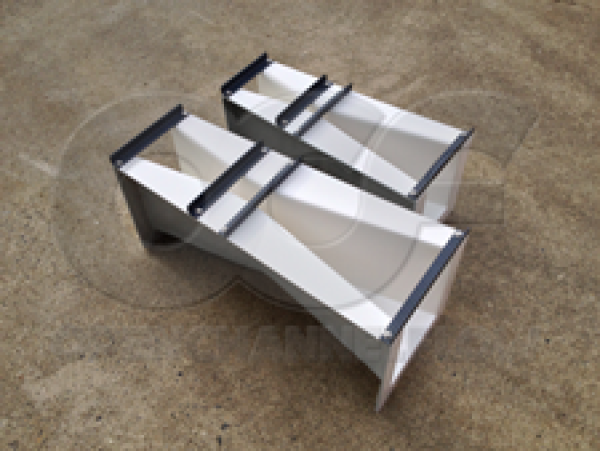This website uses a variety of cookies, which you consent to if you continue to use this site. You can read our Privacy Policy for
details about how these cookies are used, and to grant or withdraw your consent for certain types of cookies.
ISCO’s Flow Measurement Handbook Flow Tables are Wrong!
ISCO’s Flow Measurement Handbook Flow Tables are Wrong!
ISCO does a great job of presenting a wide range of information on measuring open channel flows in their Open Channel Flow Measurement Handbook. The handbook strikes just the right note when it comes to presenting the material in a way that the casual operator can readily understand…that is right up until you get to their flow tables!

In the transition from the Sixth Edition (the white background) to the Seventh Edition (the blue background), a number of editorial changes were made. One of these changes was the generation of new flow tables for weirs and flumes.

The Problem
Comparing the tables from the Sixth Edition to those of the Seventh Edition, the editors made a bold move to generate flow tables that go always the way down to zero head. The problem is that this gives the casual user the false impression that the device in question will accurately down to those levels…and that just isn’t true!
Weirs and flumes have minimum heads / flow rates, below which the device simply no longer exhibits the levels of accuracy as they do in their normal operating ranges. When you drop below these minimum levels fluid properties and boundary layer conditions that are negligible under normal flows now have a great impact on the actual rate of flow through / over the device.
Weirs as an Example
Multiple investigations by research laboratories around the world have shown that the minimum recommend head for weir is 0.2-feet, but each and every weir flow table in the Seventh and Eight editions have the flow rates / head going down to zero. This is simply wrong!
Below 0.2-feet of head, the nappe (the body of water going over the weir) may not have sufficient energy to reliably spring clear of the downstream face of the weir. When the nappe collapses and is no longer aerated, the water level upstream of the weir (were the point of measurement is) draws down. The draw down gives the impression that the weir is passing less flow that actually is.
Unfortunately, lapses like this are found not only in the Open Channel Flow Measurement Handbook, but also in tables from other primary device manufacturer’s / resellers / distributors.
The Solution
When we sat down to create our flow tables, Openchannelflow our decision was to focus on the sources themselves.
- We scoured a wide range of source materials, including:
- Organization / industry / state / national standards
- Government publications
- Educational research papers and theses
- Topic specific books, articles, and journals
- Where sources were in conflict we evaluated the differences and reputation of the source materials, choosing only the most reputable
Ultimately, we chose conservative ratings for the flow tables that we developed. We further blocked out the area below the minimum operating range and indicated that the flow equations for the device were not valid and/or the general device accuracy should not be expected in the range.
Sometimes these decisions meant that Openchanelflow’s flow tables were dramatically different those published by our competitors or other manufacturers serving the open channel flow measurement industry.
An excellent example of this is the Large 60º V Trapezoidal flume.
- According to the flow table published by Tracom (and as shown ISCO handbook) the Large 60º V Trapezoidal flume is rated from 0.0898 to 155.9 GPM.
- Unfortunately, according to two reputable publications (Transactions of the American Society of Agricultural Engineers and the Washington Agricultural Experiment Station), the flume is only capable of accurately measuring flows from 5.208 – 116.3 GPM.
- Those ratings are dramatically different, 0.0898 vs. 5.208 GPM on the low end and 155.9 vs. 116.3 GPM on the high end. Although a standardized device, Openchannelflow’s Large 60º V Trapezoidal flume would seem to be at a disadvantage as it can’t go as low / as high as the same device from other manufacturers.
Why the difference in rating? Both ISCO’s and Tracom’s (which is copied from ISCO’s Handbook) tables run the flow practically down to zero and all the way to the top of the flume.
These tables ignore both the decision made by the flume’s developers regarding the instability in low-level readings and the very real potential for overtoping if the flume is used to its full depth!
The picture below shows a Large 60º Trapezoidal flume measuring industrial effluent. The level in the flume is 4.5-inches at the point of measurement – well below the ISCO / Tracom limit of 6.72-inches, but upstream of the flume where the flow transitions from the inlet pipe into the inlet end adapter, the level is even higher. If the ISCO / Tracom approach to flow rating was used to size the flume, the channel upstream of the flume may well overtop before the desired flow depth in the flume was reached!

While we have called out ISCO and Tracom above (as their tables are the same), the sort of misrating is also present in Plasti-Fab's table for the same flume. Their table rates the flume down to 0.17207 GPM (an absurdly precise number if you ask us). Their top end, however, matches Openchannelflow's at 116.3 GPM.
On those occasions where secondary flow table sources are not available (i.e. HS / H / HL flumes) and a rating should be of concern, Openchannelflow deliberately alerts the user to the limitation (in this case that the tables are calculated to the very top of the flume) so that they can incorporate the information into their decision making process.
Ultimately we believe that when you use a flow table you should:
- Have confidence in the table, knowing it isn’t under / over rated
- Know what the expected device accuracy is
- Know the discharge equation is
- Be in units that are useful to YOU
- Know the sources that the table was derived from in event that there is ever a question
Related Blog Posts
Explore more insights in our blog.

LOCATIONS IN ATLANTA, GA & BOISE, ID




